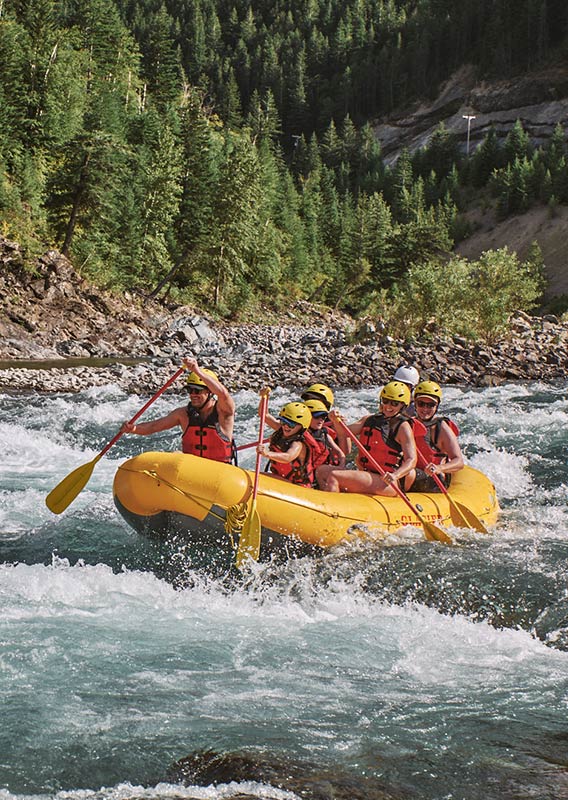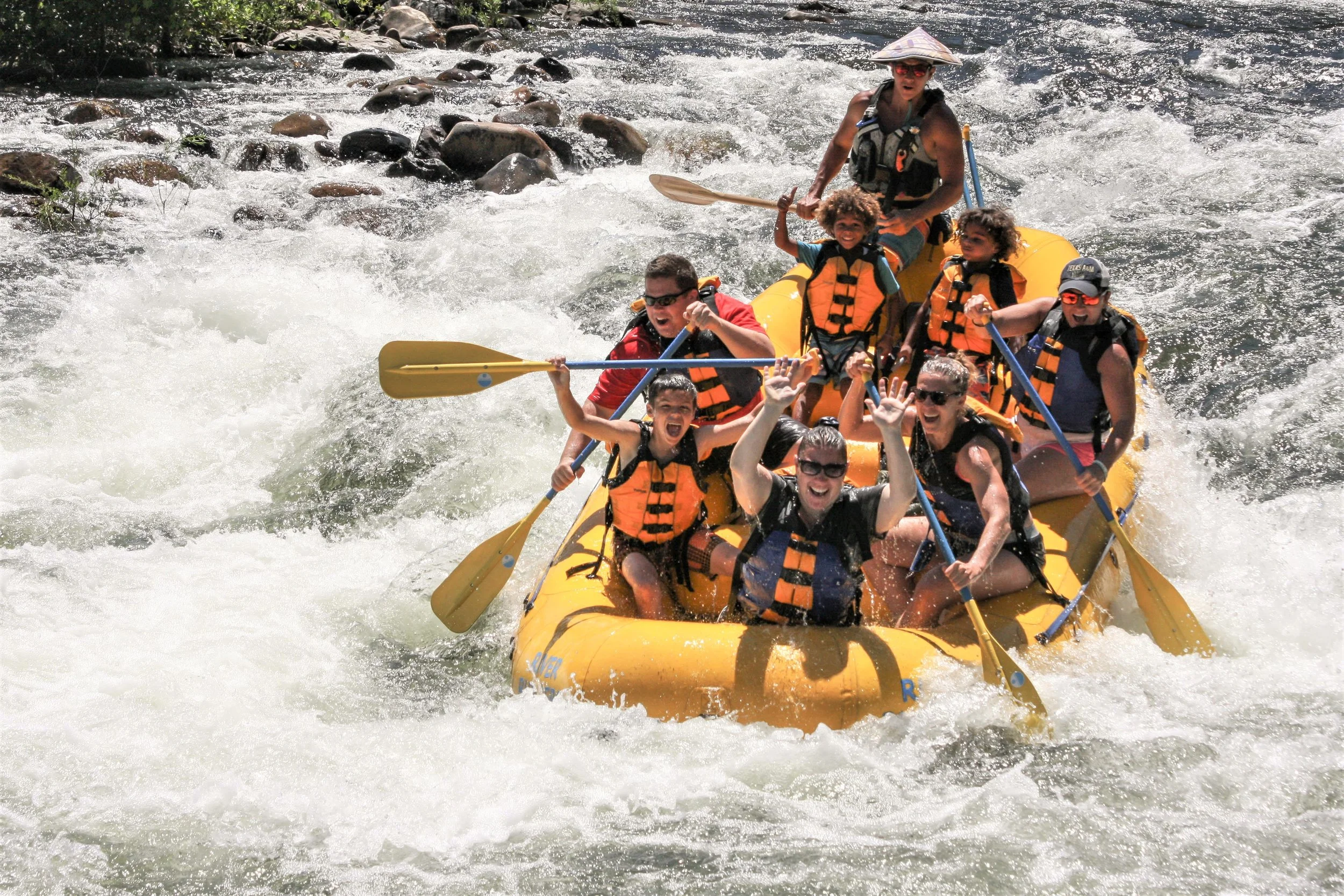Get Ready for an Adrenaline-Packed White Water Rafting Colorado Expedition
Get Ready for an Adrenaline-Packed White Water Rafting Colorado Expedition
Blog Article
The Ultimate Adventure: Water Rafting Idea
Embarking on a water rafting experience is an awesome experience that demands a blend of ability, prep work, and respect for nature's awesome forces. As the thrill of the river moves you onward, browsing through spins and transforms, the art of water rafting introduces itself as a test of both physical expertise and psychological acuity.
Necessary Equipment for Water Rafting
To guarantee safety and security and comfort during water rafting trips, it is vital to outfit oneself with the crucial gear tailored to this daring activity. The very first and most crucial tool is a well-fitted individual flotation protection device (PFD) or life vest. This is non-negotiable for all rafters, as it provides buoyancy in case of accidental immersion in water. Furthermore, a strong headgear is necessary to protect against head injuries, particularly in rough waters or if shaken off the plethora.
Furthermore, appropriate footwear is vital for maintaining good grasp and shielding the feet from unsafe surface areas or sharp rocks. Neoprene booties or water shoes are advised for this objective. It is likewise recommended to wear quick-drying apparel, such as a wetsuit or breakout guard, to control body temperature and protect against hypothermia in cold water conditions.
Finally, a reliable paddle is necessary for steering with the water efficiently. It should be lightweight yet sturdy to stand up to the rigors of rafting. By purchasing these crucial items of gear, rafters can appreciate their experience on the water with self-confidence and comfort.
Picking the Right Rafting Route
When preparing a water rafting experience, selecting the proper rafting path is crucial for a secure and satisfying experience. Aspects such as the degree of problem, water problems, and the length of the path should all be taken into consideration before starting your journey.
Firstly, evaluate your team's ability level and experience. Different rafting courses are categorized based on trouble levels ranging from Course I (very easy) to Class VI (unsafe and extremely challenging) It is essential to pick a course that lines up with the capacities of all individuals to guarantee everybody's safety and satisfaction.
In addition, take into account the water conditions of the path. Some paths might have tranquil waters appropriate for novices, while others may have strong currents and challenging rapids that need more innovative abilities. Researching the water degrees and possible hazards of the route beforehand can help you make an educated decision.
Finally, think about the size of the rafting route. Longer routes might need more time and endurance, so select a path that fits within your group's timeframe and physical capabilities. By very carefully choosing the ideal rafting path, you can set yourself up for a remarkable and awesome adventure on the water.
Safety Precautions on the Water
Taking into consideration the relevance of selecting the ideal rafting path for a pleasurable and risk-free experience, it is necessary to focus on safety and security precautions on the water to minimize possible threats and make certain a successful adventure. Before embarking on a water rafting trip, make sure all individuals use appropriately suitable individual flotation protection tools (PFDs) and safety helmets to guard versus crashes. By sticking to these security preventative measures, you can boost the general experience and lessen prospective threats while water rafting.
Understanding Paddling Methods
Establishing effectiveness in paddling strategies is crucial for browsing with differing water conditions and ensuring an effective water rafting experience. White Water Rafting Colorado. Correct paddling not only helps in guiding the plethora efficiently however also adds to the general sychronisation and teamwork required for a safe and delightful journey
Among the fundamental paddling techniques is the forward stroke. This stroke entails dipping the paddle blade completely into the water and pulling it back alongside the plethora, offering propulsion and steering. The backwards stroke, on the other hand, is essential for reversing or slowing down the raft. By understanding the forward and backward strokes, rafters can properly control the rate and direction of the plethora.

Tips for Handling Rapids Like a Pro
To excel in browsing tough river problems, proficient water rafters apply their grasped paddling strategies with precision and skill when handling rapids like experienced specialists. When dealing with rapids, it is important to keep a strong and coordinated paddling rhythm. This rhythm helps the plethora maintain its program and stability amidst the unstable waters. Additionally, it is necessary to prepare for the activities of the raft and adapt swiftly to transforming conditions. Experienced rafters utilize their expertise of river characteristics to proactively adjust their paddling technique, guaranteeing reliable navigating with rapids.

Final Thought
To conclude, water rafting needs vital equipment, mindful path choice, safety and security precautions, mastering paddling strategies, and taking care of rapids with proficiency (White Water Rafting Colorado). By adhering to these tips and methods, adventurers can guarantee a successful and delightful rafting experience on the water. Keep in mind to always focus on security and be planned for the challenges that featured browsing through rapids. With technique and expertise, any individual can become a skilled water rafter.

Thinking about the value of picking the best rafting course for a risk-free and satisfying experience, it is crucial to prioritize safety and security precautions on the water to mitigate potential threats and guarantee an effective experience. Inevitably, developing paddling strategies is key to a effective and exhilarating water rafting experience.
In verdict, water rafting calls for vital equipment, careful path choice, safety preventative measures, mastering paddling methods, and handling rapids with expertise.
Report this page